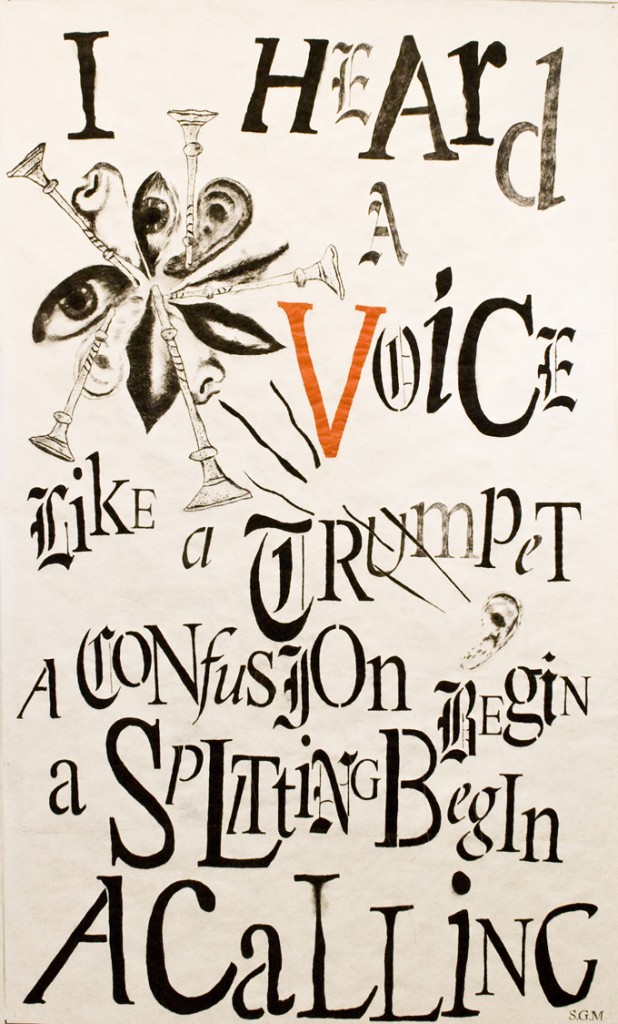On Artist Lesley Dill | By Oliver de la Paz

I’d been struggling with a poetic sequence for a couple of months. The writing had stopped. Although I’d taken long hiatuses from work before, three months away from the poems was unusual for me. Writing this particular sequence of poems seemed like merely marking time, and such writing had put me ill at ease. So I decided to go out hunting for something, anything, to get me back to the desk. When I heard there was an exhibit at the Whatcom Art Museum showing the work of Lesley Dill, a sculptor, printmaker, collagist, and performance artist, I decided that I’d take a look for my writing break. Bellingham is known as the “City of Subdued Excitement,” so such showings are a rare treat.
When I entered the exhibit, I felt a sincere kinship to her work, not only because of her love for Emily Dickinson, but for her understanding of the transformative power of language. Bits of letters and words dangled from wire here and there. A wall seemingly made out of silver hair slowly formed words and phrases. I watched language emerge from the walls. Bright stars of words, phrases, and sentence spilled from every inch of her various pieces on display. In Dill’s interviews she invokes Dickinson as her chief muse. Her work is heavily layered with text as she includes lines from that poet, Kafka, and other writers throughout her work.

The natural and the divine, in her installation pieces, are wrought together through the force of her poetic language. Her seismic, rapturous installation pieces are given context and resonance with the inclusion of spliced lines of poetry. In a documentary film about Dill entitled We Are Animals of Language, she talks of being “on the hunt…looking for something that will affect us, that will cause this surge of openness…looking for expansion and possibility.” Apart from her use of poetry in her installation pieces, what attracts me to Dill’s work is her process. Like me, she dwells in a space of accumulation. She gathers language from poetry and creates a translation that occupies a physical space. Further, though, she talks of her art as an accumulation of time. The minutiae in the crafting of each piece suggest a place. A being.
I like this idea of accumulating work as a measurement of hours and days. I go to my writing desk now with this idea as an acceptable goal. It’s okay to compose work as a demarcation of time and place. It’s okay to count pages along with the days. Sometimes we go to the writing desk to mark time and in doing so perhaps we manage to stop time for a little while.
*
NER Digital is a creative writing series for the web. Oliver de la Paz is the author of three books of poetry: Names Above Houses, Furious Lullaby, and Requiem for the Orchard. He is the co-editor of A Face to Meet the Faces: An Anthology of Contemporary Persona Poems and the co-chair of Kundiman.org‘s advisory board. He teaches at Western Washington University.